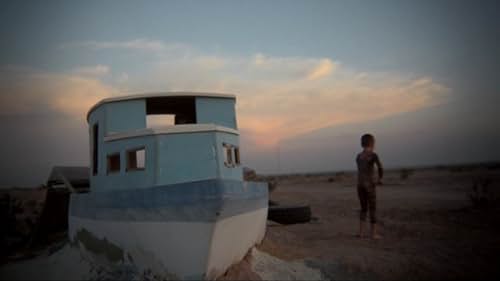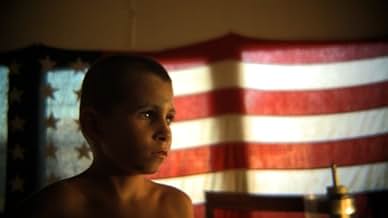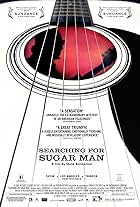Bombay Beach is a small, barely populated desert town in rural California. It is situated on the edge of a former dust bowl that was flooded by the Colorado river in 1905, transforming it into the Salton Sea. By the 1950s, a number of high-profile yacht clubs had appeared around its coastline and innumerable developers bought up land in the hope of building a holiday resort. Unfortunately, the project was quickly discarded and Bombay Beach became a ghost town, littered with derelict houses and dead, rotting fish, washed up on the shores of the now heavily polluted water.
Today, it is a tourist destination only for a handful of hipster photographers hoping to take vaguely poignant-looking pictures of the decaying, sun-baked town. It is with a similar romantic eye that Alma Har'el sets about exploring this battered little hamlet in her debut documentary, Bombay Beach.
The documentary opens with an old promotional film, urging investors to throw their money behind the Salton resort. But as two smiling holidaymakers walk joyfully into the California sunset, the celluloid runs off the reel and we are faced with the current state of the town. We are introduced to three of Bombay Beach's residents, each with a necessarily heartbreaking backstory. There is Red, an aged cowboy who hasn't seen his children in half a century; Cee-Jay, a black teen from the inner-city who moved to Bombay Beach to escape gang violence; and Benny, a troubled child of convicted felons who suffers from an array of behavioural disorders. Combined with Har'el's highly stylised images, these three narratives unfurl in a way that feels oddly contrived.
The residents of Bombay Beach go about their day as if the camera wasn't there, yet many scenes feel almost too candid. We see Cee-Jay's friends trading sordid stories about losing their virginities, and Red's ne'er-do-well neighbours shamelessly sponging off him. Considering that all the time Har'el is standing behind the camera, it makes one start to question the film's legitimacy as a documentary. Throughout the film there is a continual sense that Har'el's subjects are acting like themselves rather than being themselves. Even more mystifying is the inclusion of several staged dance routines and visual montages which augment the narrative. Yet while the amount of artistic license taken by Har'el is a little troubling at first, it is central to Bombay Beach's charm.
Of course, fictive elements have been employed by documentary filmmakers since the very beginning of the genre. In the 1922 silent classic, Nanook of the North, which followed the lives of an Inuit family, Robert Flaherty purposefully directed his subjects and staged many of the scenes. While this undoubtedly compromised its factual integrity, the film remains a poetic and enjoyable depiction of a fast-disappearing culture. Like Flaherty, Har'el embraces the artificial in order to forge a compelling narrative, which comes to us from reality but is unrestrained by the need for objectivity.
More than anything else, Har'el seems intent on expressing the strange beauty that she herself sees in the town, and she does so rather well. Red narrates much of the film with his homespun truisms about love, life and family and, in tandem with the desolate imagery, it is ghostly and evocative.
In many ways, there's very little substance here. At times, the stylistic gloss Har'el lays over the film can feel painfully superficial, and some of the dance routines seem to be nothing more than artsy visual non sequiturs thrown in for good measure. However, Bombay Beach remains an oddly stirring film and a veritable feast for the eyes.
Last month, when the UK Mirror blasted David Attenborough's BBC documentary, Frozen Planet, for its use of stock footage, the reaction from the public was not one of horror but nonchalance, and a slight fear that, due to this accusation, Attenborough's lush visuals and soothing voice might be taken away from them. So it seems, we enjoy documentaries for the aesthetic pleasures they provide as well as their factual content. Bombay Beach is a film that capitalises on this to incredible effect.


















